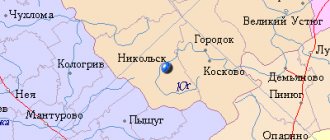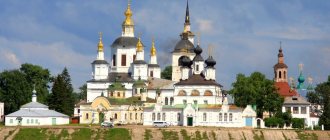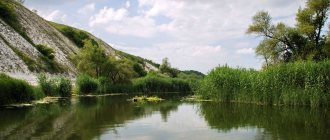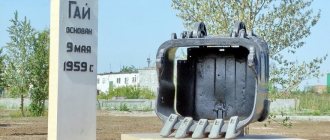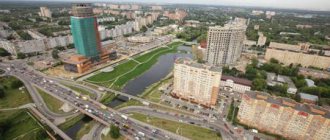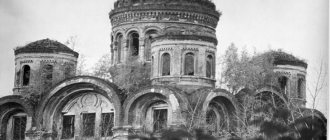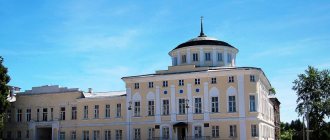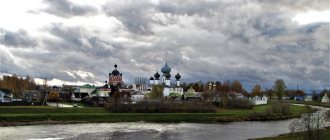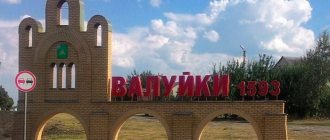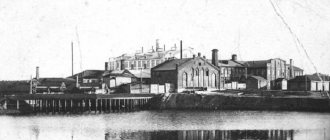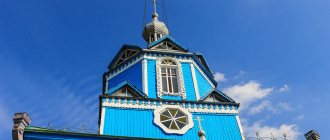What do you know about Sokol? I think it's nothing. I, too, neither in my dreams nor in my spirit, knew about it until I ended up here myself. Yes, even in the process of preparing our route, I looked at Wikipedia, but the standard “city in Russia, administrative center, etc. blah blah blah” was waiting for me there, in short - nothing interesting.
Meanwhile, it is in Sokol that there is probably the most exciting museum in the Vologda region, for which you can safely go there. Moreover, the city is located only some thirty-five kilometers from Vologda.
The history of Sokol is entirely connected with the pulp and paper industry. The first factory opened here back in 1899. In honor of the nearby village of Sokolovo (known, by the way, since the 17th century), the production was named “Sokol”. The workers' settlement that soon appeared around it received the same name. Just four years after its launch, the factory became the third in the Russian Empire in terms of paper production.
Currently, Sokol is the paper capital of the Vologochin region. The city has one woodworking and two pulp and paper mills; various grades of paper and furniture are produced here. Sokol is also the third largest city in the region (the first and second are Vologda and Cherepovets, respectively; at the same time, the population of Sokol is about ten times less than each of them).
The city stands on the Sukhona River. This river is interesting because in the upper reaches (exactly where Sokol is located) during the spring flood it changes the direction of its flow to the opposite.
Visually, Sokol is an ordinary Soviet workers' city with several blocks of standard block high-rise buildings and a vast wooden private sector. Even under the snow he looks unkempt and unkempt.
History of the city Sokol
The history of this small town is closely connected with the emergence of the paper and wood processing industries.
The settlement itself arose thanks to the construction of a paper mill. An industrialist from Arkhangelsk, Surkov, decided to take up this matter. He liked the place for its rich forests, nearby villages filled with labor, and ease of communication along the Sukhona River with Arkhangelsk.
Interesting to know. The peculiarity of the Sukhona River is that the direction of its flow changes to the opposite during high water in the spring.
One of the villages is Sokolovo, which served as an inspiration for the name of the future factory. The first mentions of it appeared in 1615.
Laying the foundation began in 1897, and production started 2.5 years later. The Sokol factory grew rapidly. In 1903 it was already the third in Russia.
Surkov began his career as an ordinary pharmacy pharmacist. But later he managed to create first a small mineral water plant, and then a number of large joint-stock partnerships. He participated in the creation of the White Sea Railway. His permanent place of residence is Arkhangelsk. The management of the Sokolovo factory was entrusted to directors appointed by the board.
At first, the factory belonged to several shareholders, but Surkov managed to buy out all the shares and become its sole owner.
Factory Sokol
However, his factory was not the only large enterprise of that time. New enterprises are emerging:
- In 1900, manufacturer Malyutin began construction of a sawmill near the village of Leshchevka.
- The merchant Plaginov is building a similar plant on the banks of the Sukhona River.
- Since 1915, industrialist Pechatkin's factories were added - pulp and artillery.
After the revolution, the Malyutin and Pechatkin factories and the Sokol factory were nationalized.
The city begins to actively develop. New paper mills and hospitals are appearing there. A bank building, a post office, an editorial office, a school, and the House of Soviets appear on the central Sovetskaya Street.
The village of Sokolovo becomes an urban-type settlement. According to the 1926 census, the population in the village is 5936 people. And since 1932 it has been transformed into a city. Nearby villages joined it.
Currently, Sokol is known as the paper capital of the Vologda region, with 3 large enterprises in the woodworking industry. They produce:
- lumber, fiberboard, plywood;
- house details;
- furniture;
- paper of all types;
- cellulose;
- wood flour.
The city territory is divided into 6 microdistricts.
There is the Sukhona railway station and the Sokol river port.
A novelty in the city is a 7-meter-long bench with a large inscription – Falcon. The height of the podium is 2 meters. To produce three-dimensional letters on the pedestal, wooden structures from the Sokolsky woodworking plant were used.
Nearby there are 4 benches made in the same architectural style. This art object was installed in August 2022 on the central square near the administration building. It has become a kind of calling card of the city and a new place for photo sessions for residents and guests of Sokol.
Art object Falcon
Climate
| Climate of Sokol | |||||||||||||
| Index | Jan. | Feb. | March | Apr. | May | June | July | Aug. | Sep. | Oct. | Nov. | Dec. | Year |
| Average temperature, °C | −11,4 | −10,5 | −5,4 | 1,9 | 9,8 | 15,6 | 17,9 | 14,9 | 9,4 | 2,8 | −6 | −10,2 | 2,5 |
| Source: [www.retscreen.net/ru/home.php NASA. RETScreen Database] | |||||||||||||
Museum of Local Lore
A group of enthusiasts did a lot of work in its creation. Since 1958, they have been collecting materials and documents and creating the first exhibitions. The museum was opened in 1962. He had to change his address several times.
The local history museum has 6 halls. Tourists are presented with a huge collection of 18,000 exhibits. The storage base consists of:
- items for peasant use;
- peasant clothing, military and school uniforms;
- banknotes, medals;
- products made of ceramics, wood and metal;
- collections of crystal and porcelain from the Finnish sister city;
- products from glass factories - glasses, glasses, bottles, inkwells.
There you can see Vologda woven lace, wedding towels, wedding dresses and tailcoats, keys, metal locks, samovars, bracelets, hairpins, weapons, spinning wheels, spindles, birch bark products.
Exhibits of the local history museum
In the hall dedicated to archaeological monuments, objects preserved from Mesolithic times are exhibited. Among them are archaeological finds from nearby villages. An item of valuable uniqueness is an ax made of stone from the Balano-Fatyanovo culture.
The numismatics collection is presented in the form of banknotes and coins that were in circulation in pre-revolutionary Russia and during the years of the establishment of Soviet power.
Of greatest interest to visitors are lottery tickets issued in the Russian state, stamp money, wartime bonds, Polish groschen from 1605-1610, and medals from Sokol residents.
The basis of the “Written Sources” collection is manuscripts, membership cards, documents, letters from local residents who took part in the Great Patriotic War and in military operations in Afghanistan and Chechnya.
Yes, we can say that such things are found in most local history museums. But this establishment has a special place - the “Communal Apartment” exposition.
One of the museum halls is divided into 3 rooms, furnished in the style of different years. Entering there, you see the furnishings of the apartment of the owners who have lived there since 1930. You immediately find yourself in the atmosphere of a communal apartment, taking a trip back in time. The apartment is inhabited by different people with their own rules and ways of life. The rooms are separated by a corridor in which laundry hangs after washing, there is a sled and a bicycle.
Guests are accompanied by the hostesses of the apartments, dressed in costumes of the appropriate period. They talk about their clothes, the decor of the room. For the 30s, a relic is a gramophone and a carved antique mirror; for the 50s, a TV set covered with a knitted napkin. And so in every room.
Their excursion is equivalent to a mini-show. They act out scenes with situations typical for a communal apartment, quickly change clothes, and each time move to a different era. From them you will hear political news, gossip, quarrels.
Screams can be heard in the kitchen, the center of communal scandals. Although it wasn't just swearing. In this place we celebrated holidays collectively and just talked.
Guests participate in competitions and quizzes on various topics. One of the fun competitions, “Who can fill the string bag the fastest,” takes visitors back to the years of shortages. New programs on various topics are constantly updated: “Songs in the kitchen”, “Soviet style wedding”.
Those who wish are allowed to touch the dishes in the cabinets with their hands, look at magazines and books, even try on clothes from the cabinets, play with toys, and watch filmstrips.
Room in the hall of social life
Everyone is interested in visiting these rooms. The older generation indulges in nostalgic memories. For young people and children, certain things cause complete misunderstanding and surprise. Museum workers are receiving proposals to create a room dedicated to the 90s.
The tour ends with a musical party in the style of the 70-80s. The final chord is lunch with boiled potatoes, Olivier salad, sprats, pickled cucumbers, pancakes with condensed milk.
Apartment exhibits are constantly being updated. Often visitors come again, bringing their belongings from home or cottage.
Museum address: Svobody Embankment Street, 50.
There is a branch of the museum in the city of Kadnikov. It is located near Sokol - only 12 km away.
This area has long been known for its fairs with festivities and fun. The Peter's Fair was held before the feast of the Holy Apostles Peter and Paul. It lasted several days - it began on June 29 and lasted until July 3. People came there from all over the area. They prepared for this day in advance - they sewed new clothes.
Now this holiday has been revived. Every year a fair is held in Kadnikov. It takes place in early July.
Petrovskaya Fair in Kadnikovo
Branch address in Kadnikov: R. Luxemburg street, 20.
what to see in the Sokol area - Moscow 24, 11/13/2014
M24.ru, together with the Internet project “Walking around Moscow,” is opening a new section in which it talks about atypical places in the city for walking.
There are much more of them than residents of our metropolis are used to thinking. Almost every district and corner of the capital keeps secrets of the past, interesting stories about residents, houses or streets. In the first issue we talk about the sights of the Sokol district: from the house of football player Lev Yashin to the fire tower, which was almost turned into a shopping center. The falcon appeared on the site of the village of Vsekhsvyatskoye, known since the 14th century, and the Fraternal Cemetery located nearby. For a long time the area belonged to the Moscow region, and only in 1917 it became part of Moscow. In 1923, a cooperative village for artists Sokol appeared in the area, and subsequently the entire area was named that way. One of the most prestigious places on Sokol during the Soviet years was the Sandy Streets area. Officials, prominent military men, athletes and cultural figures lived in Stalin's houses. In the second half of the 20th century, Leningradsky Prospekt was even jokingly called “TRASH,” that is, “Artists, Writers, Artists, Musicians.” And today there are many memorial plaques on the facades of houses, and the apartments are still some of the most prestigious and expensive in the city.
Comment from a Muscovite
Nina, medical worker: My great-grandfather traded in Vsekhsvyatsky hay at the beginning of the 20th century. Then it was one of the largest villages near the city at the beginning of the road from Moscow to St. Petersburg. Carts and crews stopped there for “refueling”; there were teahouses - analogues of today's roadside cafes. It turned out to be such a big “gas station”. It’s impossible to imagine now, but it happened. Church of All Saints, Leningradsky Prospekt, 73a
Photo: m24.ru/Vladimir Yarotsky
The church is unique, if only because the bell tower of the building is tilted, which is why it resembles the Leaning Tower of Pisa. The slope, of course, was not intended by the architect. This happened due to the characteristics of the soil, the underground river and the metro station.
The church is functioning; if you wish, you can go inside or just stroll around the yard. This is the only Orthodox church in the area. In the late 70s, the church was one of the most visited in Moscow. Several decades earlier, in 1939, the church was closed in disgrace by the communists, accompanied by a public burning of icons in the courtyard. However, seven years later, residents of the area achieved the return of the church.
Resident's comment
Natalia, 35 years old, television worker: “There is practically no place to walk in our area (due to the nature of the infrastructure - there are many roads), but it is possible to conduct excursions in the style of “the past and thoughts about it.” This is where our famous houses can come in handy - interesting people with interesting lives lived in them. Our region is also known for the fact that four dozen rivers flow under it.”
General's House, Leningradsky Prospekt, 75
Photo: m24.ru/Vladimir Yarotsky
Literally a few steps from the temple is the general's house. The housing was built for high-ranking military personnel, which is why its decorations correspond to a military theme. For example, on the facade you can see flagpoles with images of stars. The house is known, first of all, for the fact that 29 Heroes of the Soviet Union and the legendary hockey coach Anatoly Tarasov lived in it.
Fire tower, Leningradsky Prospekt, 71a
Photo: m24.ru/Vladimir Yarotsky
Previously, from the tower one could see a fire within a radius of several kilometers, today only the windows of houses in the neighborhood could be seen. This tower is practically the last one in the city (another one can be found in Sokolniki). Today, Moscow fire departments also have towers, but they are not used to inspect the area in search of fire, but are used, for example, as a room for drying uniforms.
Ten years ago, the tower and fire station were to be turned into a shopping center. But the building is located on the territory of cultural heritage sites, and shops never appeared on the site of the fire station.
Resident's comment
Kirill, 24 years old, engineer: “I adore Sokol and I think that everyone who lives here has the same opinion. Sokol is incomparable, and most importantly, there are almost no panel high-rise buildings here, well, maybe two or three. Beautiful, spacious, and so much greenery! Nobody would want to move from Sokol. Surely there are some disadvantages, but I almost never encountered them. With only one thing - rats. There were a lot of them, but they seem to have solved the problem in about two years.”
Admiral's House, Leningradsky Prospekt, 71
Photo: m24.ru/Vladimir Yarotsky
Very close to the tower there is a large residential building looking towards Leningradka. The Stalinist building is called the Admiral's building. The point is not that the most famous admiral of the Russian fleet once lived in the house. It’s just that the decoration of the building uses a water theme: from seahorses to anchors and steering wheels. This house is one of the most beautiful on Sokol. True, the first floor is covered with colorful shop posters, which gives the historical building a somewhat specific appearance.
Former air force clinic-hospital, Peschanaya street, 7
Photo: m24.ru/Vladimir Yarotsky
Previously, this building housed the city's main hospital for civil aviation employees. That is why at the clinic there is a small sculpture of pioneers with a model airplane. If you look closely, on the facade of the building you can see two pairs of clocks showing the correct time. By the way, the building itself was not built for a clinic, but for a pedagogical college. Now there is also a hospital there. True, not for everyone who works in our aviation, but only for Aeroflot employees.
Resident's comment
Oleg, 32 years old, production manager in a construction industry
Park of Heroes of the First World War, Novopeschanaya street, possession 12
Photo: m24.ru/Vladimir Yarotsky
Previously, on the site of a significant part of Sokol there was a Brotherly Cemetery for victims of the First World War. By the end of the 40s, the cemetery was liquidated and turned into a park. Most of the headstones were left as memorials in the park and can still be seen today. For example, the mass grave of Moscow State University student Sergei Shlikhter and three nurses who died at the age of 19-20.
Cinema "Leningrad", Novopeschanaya street, building 12
Photo: m24.ru/Vladimir Yarotsky
If you walk through the park, you can see the Leningrad cinema. Several years ago, the building was closed for reconstruction, after which a space for cultural leisure of residents will appear there. What exactly will be there is still unknown. Next to the cinema there is a small nice park with Stalinist sculptures and children's attractions.
Resident's comment
Andrey, 25 years old, works in advertising: “Sokol is a beautiful, green area. The only negative is the constant construction of the highway on Halabyan Street. There are a lot of cars on the lanes and streets, sometimes it’s difficult to pass, but these are modern problems of the metropolis. In particular, sports - wonderful grounds and many “boxes” for all types of games.”
Memorial plaque in memory of Lev Yashin, Chapaevsky Lane, 18/1
Photo: m24.ru/Vladimir Yarotsky
The famous football goalkeeper of the Dynamo club Lev Yashin spent most of his life (from 1964 to 1990) in a house in the Sandy Streets area. Now there is a memorial plaque on the facade of the building.
Resident's comment
Olga, 24 years old, stylist: “I really love this area. I love it for the large number of parks, which today are very clean and well-maintained. There is a place to take a walk with your child or just take a walk in the evening. I love it for its developed infrastructure and “everything is at hand.” Large selection of shops within walking distance, many schools, kindergartens, clubs for children. It even has its own church. I can’t say anything bad because I spent my entire childhood and school years here, so my impressions are only the brightest and warmest. Now, having lived in another area for several years, I understand how beautiful Sokol is in every sense! When I come to visit my parents, I understand that there is simply no better area for me.” Ekaterina Kadushkina
Subject: Walking around Moscow
www.m24.ru
Paper Museum
The Paper Museum is the well-deserved pride of its founders. It was opened quite recently - in December 2014.
Some of the archival documents were taken from the Sukhonsky Pulp and Paper Mill Museum. The Forestry College provided assistance in the production of equipment models.
The exhibits on display tell about the formation of paper production, the history of the appearance of paper, and how paper production developed at Sokol enterprises.
The museum has several halls:
- The tour begins with a hall dedicated to knowledge about the development of ancient paper craft. Visitors understand how paper was invented in China using bamboo pulp. They are told about papyrus in Ancient Egypt, birch bark writing in Rus'.
- In another hall, tourists are introduced to the history of the creation of the first paper-making workshops and diagrams of paper-making machines.
The remaining halls house exhibits telling about the history and activities of the Sokolsky Pulp and Paper Mill. An interesting model is a mock-up of a digester brought by Surkov to the opening of the Sokol factory.
The value of the museum is a model of a paper-making machine. There is only one other such exhibit in Russia. There is a filing machine in the hall. It is used to fasten notebooks and notebooks. Visitors are invited to take part in a master class on making a notebook.
Paper making machine mockup
This excursion is intended for people over 14 years of age. Teenagers are offered to watch a film about the development of paper production. For children, master classes are held on creating toys from paper, an exhibition of children's drawings, and paper craft competitions are organized.
Exhibits that are distinguished by their originality are dresses made of corrugated paper. They were made by craftsmen of the Folk Culture Center.
Address of the Paper Museum: Sovetsky Prospekt, 8. Sokolsky Pulp and Paper Mill building. The tour must be booked in advance. It is enough to gather a group of 5 people and call 2-10-59.
Notes
- [www.sokoladm.ru/index.html?razdel=adm&p=poseleniya Settlements] on the Sokolsky district website
- ↑ 123
www.gks.ru/free_doc/doc_2016/bul_dr/mun_obr2016.rar Population of the Russian Federation by municipalities as of January 1, 2016 - Order of the Government of the Russian Federation of July 29, 2014 No. 1398-r “On approval of the list of single-industry towns”
- [base.consultant.ru/cons/cgi/online.cgi?req=doc;base=ESU;n=24329 Resolution of the All-Russian Central Executive Committee of March 2, 1932 “On changes in the administrative-territorial division of the Northern Territory”]
- [base.consultant.ru/cons/cgi/online.cgi?req=doc;base=ESU;n=24504 Resolution of the All-Russian Central Executive Committee of 06/01/1932 “On the expansion of the city limits. Sokol, Sokolovsky district, Northern Territory, and renaming the district"]
- ↑ 1234567891011
www.MojGorod.ru/vologod_obl/sokol/index.html People's encyclopedia “My City”. Sokol (city) - [demoscope.ru/weekly/ssp/rus59_reg2.php All-Union Population Census of 1959. The size of the urban population of the RSFSR, its territorial units, urban settlements and urban areas by gender] (Russian). Demoscope Weekly. Retrieved September 25, 2013. [www.webcitation.org/6GDOghWC9 Archived from the original on April 28, 2013].
- [demoscope.ru/weekly/ssp/rus70_reg2.php All-Union Population Census of 1970 The size of the urban population of the RSFSR, its territorial units, urban settlements and urban areas by gender.] (Russian). Demoscope Weekly. Retrieved September 25, 2013. [www.webcitation.org/6GDOiMstp Archived from the original on April 28, 2013].
- [demoscope.ru/weekly/ssp/rus79_reg2.php All-Union Population Census of 1979 The size of the urban population of the RSFSR, its territorial units, urban settlements and urban areas by gender.] (Russian). Demoscope Weekly. Retrieved September 25, 2013. [www.webcitation.org/6GDOjhZ5L Archived from the original on April 28, 2013].
- [demoscope.ru/weekly/ssp/rus89_reg2.php All-Union Population Census of 1989. Urban population]. [www.webcitation.org/617x0o0Pa Archived from the original on August 22, 2011].
- [www.perepis2002.ru/ct/doc/1_TOM_01_04.xls All-Russian Population Census 2002. Volume. 1, table 4. Population of Russia, federal districts, constituent entities of the Russian Federation, districts, urban settlements, rural settlements - regional centers and rural settlements with a population of 3 thousand or more]. [www.webcitation.org/65AdCU0q3 Archived from the original on February 3, 2012].
- [www.gks.ru/bgd/regl/b08_14t/IssWWW.exe/Stg/sz/05.htm Cities of the Vologda region (number of inhabitants - estimate as of January 1, 2008, thousand people)]. Retrieved June 14, 2016. [www.webcitation.org/6iGKZFCQ8 Archived from the original on June 14, 2016].
- [www.gks.ru/bgd/regl/B09_109/IssWWW.exe/Stg/d01/tabl-21-09.xls Number of permanent population of the Russian Federation by cities, urban-type settlements and districts as of January 1, 2009]. Retrieved January 2, 2014. [www.webcitation.org/6MJmu0z1u Archived from the original on January 2, 2014].
- std.gmcrosstata.ru/webapi/opendatabase?id=VPN2002_2010L All-Russian population censuses of 2002 and 2010
- [www.gks.ru/free_doc/doc_2012/bul_dr/mun_obr2012.rar Population of the Russian Federation by municipalities. Table 35. Estimated resident population as of January 1, 2012]. Retrieved May 31, 2014. [www.webcitation.org/6PyOWbdMc Archived from the original on May 31, 2014].
- [www.gks.ru/free_doc/doc_2013/bul_dr/mun_obr2013.rar Population of the Russian Federation by municipalities as of January 1, 2013. - M.: Federal State Statistics Service Rosstat, 2013. - 528 p. (Table 33. Population of urban districts, municipal districts, urban and rural settlements, urban settlements, rural settlements)]. Retrieved November 16, 2013. [www.webcitation.org/6LAdCWSxH Archived from the original on November 16, 2013].
- [www.gks.ru/free_doc/doc_2014/bul_dr/mun_obr2014.rar Table 33. Population of the Russian Federation by municipalities as of January 1, 2014]. Retrieved August 2, 2014. [www.webcitation.org/6RWqP50QK Archived from the original on August 2, 2014].
- [www.gks.ru/free_doc/doc_2015/bul_dr/mun_obr2015.rar Population of the Russian Federation by municipalities as of January 1, 2015]. Retrieved August 6, 2015. [www.webcitation.org/6aaNzOlFO Archived from the original on August 6, 2015].
- taking into account the cities of Crimea
- [www.gks.ru/free_doc/doc_2016/bul_dr/mun_obr2016.rar Population of the Russian Federation by municipalities as of January 1, 2016. Table “31. Population of cities and towns by federal districts and constituent entities of the Russian Federation as of January 1, 2016.” RAR archive (1.0 MB)]
- [sokoladm.ru/ekonomika-rayona Sokolsky district. Economy of the region]. [www.webcitation.org/6HUHoOmYr Archived from the original on June 19, 2013].
- [municipals35.ru/sokolgrad/Default.aspx?compid={8D57B5D1-811C-4001-92EC-F1E073891307} municipals35.ru/sokolgrad/Default.aspx?compid={8D57B5D1-811C-4001-92EC-F1E073891307}]
Getting to know
Another unique place in Sokol is. During a tour of the enterprise, visitors get acquainted with the history of creating clay products, the process of their production, painting technology, and learn interesting information about the potter's profession.
What visitors especially like is the opportunity to make an original souvenir with painting themselves. Masters introduce you to different painting options. Participants take away their craft with joyful emotions.
An interesting excursion will introduce you to the complete process of making a pot from a piece of clay.
Factory address: Shatenevo street, 47a.
Falcon Temples
Most of the city's ancient temples have been destroyed. The artist Podgorny studied the memories and drawings of village residents and painted many paintings depicting lost temples. The community “Sokolchan in the Vologda Region” made a gift to the city consisting of 22 paintings by Podgorny.
The following Orthodox churches are open to the public:
- Church of the Ascension of the Lord, open since 1997.
- Church of John of Kronstadt, welcoming parishioners since 2015.
Ascension Church
Temple of John of Kronstadt
Attractive places in the city and surrounding areas
An interesting place to get acquainted is the cadet boarding school. This is not a place for regular excursions, but you can ask permission to get acquainted with the life of modern cadets.
Cadet School
The school has been open since 2006. Children from grades 5 to 11 live there with full state support. The rooms accommodate 2-3 people.
The cadets' life schedule is quite busy, scheduled for the whole day, starting with getting up at 7.30. There are sports and gyms, basketball and volleyball courts, a football field, and a shooting range equipped for them. In the established scientific center, they create robots and engage in invention. The guys are proud of their inventions:
- metal detector;
- a device that allows you to send SMS to a specific number if a gas leak is detected or a fire starts.
At the television and radio center, school students make videos about the life of the boarding school, learn the basics of video editing, and have created their own website. Bank employees teach them financial literacy.
Location of the cadet boarding school: Sovetskaya street, 118.
Tourists often visit the village of Biryakovo. It houses the Kulsevel tourist complex. On its territory there is a museum of agricultural machinery. It presents unique examples of rare pieces of equipment from the mid-20th century. Moreover, visitors are allowed not only to touch them, but even get to know the controls.
Here, next to the rest house, there is an area with paths leading to a fountain, a rock garden, and a Firebird clearing. You can walk to the ancient Kulseevskaya mountain, the holy spring, and admire the surrounding picturesque places. And in winter, go skiing down the mountain slope.
Guest house in the Kulsevel complex
Biryakovo is the place where the family of the poet Nikolai Rubtsov lived for 300 years. His fans will be led along a themed eco-trail.
From archival records it is known that on the territory of the village of Biryakovo there was a Gatchina Nativity Hermitage, otherwise known as a monastery. It was founded in 1625 on the Retche River.
On the right bank there were a church and monastery cells, and on the opposite side there was a barnyard and a mill.
In 1685, a fire completely destroyed the church and cells.
Places in Sokolsky region of interest to tourists:
- A unique natural site is the Fox Mountains, where traces of the Ice Age and sites of settlements of people who lived during the Mesolithic years have been preserved.
- "Peter's Fair" in the city of Kadnikov.
Birds of rare breeds can be found in the Sokol forests. There you can see ptarmigan, golden eagle, peregrine falcon, and white-tailed eagle. They are listed in the regional Red Book. And the gray crane is listed on the International Red List of Threatened Species.
Vologda regional cadet boarding school
Belozersk (Vologda region): attractions
First of all, we stopped at the Vologda Regional Cadet Boarding School. This is not a tourist site, but we were invited to see how modern cadets live, and we couldn’t help but agree - it’s interesting to take a peek at least!
The cadet school in Sokol is considered one of the most modern educational institutions in the Vologda region. It was opened in 2006, that is, this is a project of our days, and not a legacy of Soviet times.
Training runs from fifth to eleventh grades. The state provides students with everything they need - from clothing and shoes to personal hygiene items and textbooks.
Cadets live in double and triple rooms. Those from Vologda and nearby villages go home for the weekend, while the rest spend all their time at school, going “outside the perimeter” only for the holidays.
Life for cadets is quite eventful. Get up at 7:30. Then the whole day until lights out is scheduled literally minute by minute.
We attended an open lesson on financial literacy, which was conducted by employees of "". The children were told about cash and non-cash payments and taught how to use bank cards.
Here, for example, is a card with a custom design. The cadet depicted on it was drawn by one of the boarding school teachers (however, on the bank card the image had to be reflected horizontally so that the character’s face was not hidden under the chip).
Cards with this design have now been issued to all cadet school employees. But it is not yet possible to make them for students - in Russia there is a ban on issuing bank cards to children under 14 years of age.
One interesting thing: already now any bank card can be equipped with an additional chip in which some personal information will be recorded. Such a card, for example, can be used as a pass, or as a library card in the library, or as an electronic diary.
The school has its own sports hall and gym, basketball and volleyball courts, a football field, a shooting range, and even a greenhouse. There is also a science center where students engage in robotics and invention.
One of the inventions is a household gas leak monitoring device with a sensor for increasing ambient temperature, which in the event of a gas leak or fire sends an SMS notification to a specified number. Everything is made from scrap materials: instead of a case there is a container purchased from Auchan, microcircuits and an SMS module were ordered from China. The main highlight is the cost of the device: 514 rubles (despite the fact that commercially available analogues cost at least 5-6 times more).
Another invention is a metal detector, literally assembled “from shit and sticks.” Cost - 277 rubles.
Tested: it works!
The school also has its own television and radio center. Here the guys are engaged in video editing, filming news about the life of the boarding school, and running their own website.
After visiting such places, I sometimes get the feeling that my youth was wasted. When I was their age, for example, during recess I ran to smoke outside the school and drank port wine with friends on the playground. Times and customs, however, were completely different...
